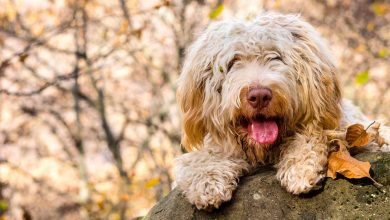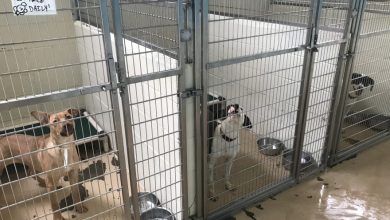Male Dog Yeast Infection: A Comprehensive Guide

In this article, we will be discussing male dog yeast infection, a common yet often overlooked health issue. We will explore why dogs get yeast infections, how to identify the symptoms, and what you can do to prevent and treat these infections. By the end of this comprehensive guide, you will have a better understanding of how to keep your canine companion healthy and comfortable.
Male Dog Yeast Infection: An Overview
Yeast infections, caused by the overgrowth of yeast (fungus), can affect various parts of a dog’s body. While it’s more common in female dogs, male dogs can also suffer from this condition. Let’s take a closer look at what causes yeast infections in dogs and the factors that contribute to their development.
Why Do Dogs Get Yeast Infections?
There are several reasons why dogs might develop yeast infections. Below, we delve into each cause in more detail to help you better understand the factors contributing to yeast overgrowth in dogs.
- Weakened immune system: A compromised immune system can make a dog more susceptible to yeast infections. The immune system plays a vital role in maintaining the balance of microorganisms on your dog’s skin, including yeast. When the immune system is weakened due to factors such as stress, illness, or poor nutrition, it becomes less effective in controlling the growth of yeast, leading to an overgrowth and subsequent infection.
- Allergies: Dogs with allergies, particularly food or environmental allergies, are more likely to develop yeast infections. Allergic reactions can cause inflammation and irritation in the skin, disrupting the skin’s natural barrier and allowing yeast to thrive. Furthermore, allergies can weaken the immune system, making it harder for your dog’s body to keep yeast populations under control.
- Hormonal imbalances: Hormonal imbalances can lead to changes in the skin, creating an environment that’s conducive to yeast overgrowth. Certain hormones, such as cortisol, can affect the skin’s oil production and pH levels. When hormone levels are imbalanced, these changes can promote the growth of yeast, leading to infections. Conditions such as hypothyroidism, Cushing’s disease, or diabetes can cause hormonal imbalances in dogs and contribute to yeast infections.
- Poor hygiene: A lack of proper grooming and cleaning can contribute to the development of yeast infections in dogs. Regular grooming and bathing are essential for maintaining your dog’s skin and coat health. When a dog’s skin is not kept clean and free of debris, it creates a favorable environment for yeast growth. This is particularly true for dogs with skin folds, long fur, or those that are prone to excessive moisture, as these factors can further contribute to yeast overgrowth.
Can Male Dogs Get Yeast Infections?
Many dog owners wonder if their male dogs can get yeast infections, and the answer is yes. While yeast infections are more common in female dogs, male dogs are not immune to these infections. Yeast infections in male dogs can occur in various parts of the body, including the genital area, ears, and skin folds.
- Gender and anatomy: While both male and female dogs can develop yeast infections, the anatomical differences between the two genders may contribute to the increased prevalence of these infections in female dogs. However, male dogs are still at risk, particularly in areas where the environment is conducive to yeast growth, such as the genital area, ears, and skin folds.
- Underlying health issues: Just like female dogs, male dogs with underlying health issues, such as weakened immune systems, allergies, or hormonal imbalances, are more likely to develop yeast infections. These conditions can make it more challenging for a dog’s body to maintain a healthy balance of microorganisms, allowing yeast to overgrow and cause infections.
- Environmental factors: Male dogs that are exposed to damp or humid environments may be more prone to developing yeast infections. Yeast thrives in warm, moist conditions, and dogs that spend a lot of time in such environments may be at a higher risk of infection.
- Lifestyle factors: Male dogs that are not groomed regularly or have poor hygiene may be more susceptible to yeast infections. Regular grooming and cleaning are essential for preventing the buildup of dirt, debris, and moisture, which can create an ideal environment for yeast overgrowth.
Where Do Dogs Get Yeast Infections?
Yeast infections in dogs can develop in several areas, each presenting unique challenges and requiring specific care. In this section, we will delve deeper into the common locations where yeast infections can occur in dogs and discuss the factors that contribute to yeast overgrowth in these areas.
- Ears: One of the most common locations for yeast infections in dogs is the ears. The ear canal provides a warm, moist environment that is ideal for yeast growth. Dogs with floppy ears are particularly susceptible to ear infections because their ears trap moisture and limit airflow. Factors that can contribute to yeast infections in the ears include ear mites, excessive ear wax, allergies, or underlying health conditions that affect the immune system. Regular ear cleaning and routine veterinary check-ups can help prevent and detect ear infections early.
- Skin folds: Dogs with skin folds or wrinkles are at higher risk of developing yeast infections due to the moist, dark environment created by the overlapping skin. Breeds such as Bulldogs, Pugs, and Shar-Peis are more prone to skin fold infections. The trapped moisture and lack of air circulation in these folds make it easier for yeast to thrive. To minimize the risk of infection, it’s essential to clean and dry your dog’s skin folds regularly. Using a mild, antifungal wipe or solution recommended by your veterinarian can help keep yeast under control.
- Genital area: Male dogs can develop yeast infections in their genital area, which can cause discomfort and inflammation. As mentioned earlier, the moist, warm environment of the genital area can promote yeast overgrowth. Factors that contribute to yeast infections in the genital area include urinary incontinence, obesity, and poor grooming. To prevent infections in this area, it’s crucial to keep your dog’s genital area clean and dry. Regular grooming and addressing any underlying health issues that contribute to excessive moisture can help minimize the risk of infection.
Male Dog Yeast Infection Symptoms
If you suspect that your male dog may have a yeast infection, it’s essential to be aware of the signs and symptoms. Early detection and treatment can help alleviate your dog’s discomfort and prevent complications. Here, we will explore some common symptoms of yeast infections in male dogs and provide additional information on each sign.
- Itching and scratching: One of the most obvious signs of a yeast infection in male dogs is excessive itching and scratching, especially around the affected area. Your dog may repeatedly lick or bite the area, trying to relieve the itchiness. It is essential to monitor your dog’s behavior and prevent excessive scratching, which can lead to skin damage and secondary infections.
- Redness and inflammation: The skin around the infected area may become red and inflamed as a result of the yeast overgrowth. This inflammation can cause your dog additional discomfort and may worsen if left untreated. In severe cases, the skin may develop a rash or become thickened and crusty.
- Discharge and odor: In some cases, there may be a discharge with an unpleasant odor coming from the affected area. This discharge can be a result of the yeast infection itself or may indicate the presence of a secondary bacterial infection. If you notice any unusual discharge or a strong odor, it is crucial to consult with your veterinarian for a proper diagnosis and treatment plan.
- Hair loss: Hair loss may occur around the infected area due to constant scratching and irritation. This hair loss can lead to further complications, such as the development of hot spots or bacterial infections. Ensuring that your dog’s yeast infection is promptly treated can help prevent hair loss and minimize the risk of additional skin issues.
If you notice any of the above symptoms, it’s crucial to consult with your veterinarian. They will be able to perform a physical examination and may take a sample of the discharge or skin cells for further analysis to confirm the presence of a yeast infection.
Yeast Infection in Male Dogs’ Genital Area
Yeast infections in the genital area of male dogs can be particularly uncomfortable and distressing for your pet. The moist, warm environment of the genital area is conducive to yeast overgrowth, which can lead to inflammation, itching, and discharge. In this section, we will further explore the factors that contribute to the development of yeast infections in the genital area and discuss additional considerations for prevention and care.
- Urinary incontinence: Dogs that suffer from urinary incontinence may be more prone to yeast infections in their genital area due to the constant moisture. The dampness created by urine leakage can create a favorable environment for yeast growth. Managing urinary incontinence through medication, weight management, or other veterinary-recommended treatments can help reduce the risk of yeast infections.
- Poor grooming: A lack of proper grooming and cleaning can lead to the buildup of dirt, debris, and moisture in the genital area, promoting yeast overgrowth. Regular grooming and bathing can help maintain your dog’s skin health and prevent infections. Be sure to clean and dry the genital area gently and thoroughly after bathing or swimming to minimize the risk of yeast growth.
- Obesity: Overweight dogs may have more skin folds and creases, which can create an environment that encourages yeast growth. The additional skin folds can trap moisture and limit air circulation, making it easier for yeast to thrive. Managing your dog’s weight through a balanced diet and regular exercise can help reduce the risk of yeast infections in the genital area and improve overall health.
- Pre-existing skin conditions: Dogs with pre-existing skin conditions, such as dermatitis or allergies, may be more susceptible to yeast infections in the genital area. These conditions can cause inflammation and changes in the skin that promote yeast growth. Working with your veterinarian to manage any pre-existing skin conditions can help prevent yeast infections and maintain your dog’s comfort.
Prevention And Treatment of Male Dog Yeast Infection
If your male dog has a yeast infection, it’s essential to address the issue promptly to avoid further complications. Here are some steps you can take to prevent and treat yeast infections in your male dog:
Prevention
- Maintain proper hygiene: Regularly groom and clean your dog, paying special attention to the genital area, ears, and any skin folds. This will help prevent the buildup of dirt, debris, and moisture that can lead to yeast infections.
- Address allergies: If your dog has allergies, work with your veterinarian to identify the triggers and develop a plan to manage them.
- Strengthen the immune system: Provide your dog with a balanced diet, regular exercise, and routine veterinary care to support a healthy immune system.
- Manage underlying health issues: If your dog has a health condition that predisposes them to yeast infections, such as hormonal imbalances or urinary incontinence, work with your veterinarian to address these issues.
Treatment
- Antifungal medications: Your veterinarian may prescribe topical or oral antifungal medications to treat the yeast infection.
- Medicated shampoos and creams: Medicated shampoos and creams containing antifungal ingredients may be recommended to help soothe and treat the affected area.
- Addressing secondary infections: In some cases, yeast infections may lead to secondary bacterial infections. If this occurs, your veterinarian may prescribe antibiotics to treat the bacterial infection.
- Lifestyle changes: If poor hygiene, obesity, or other lifestyle factors are contributing to your dog’s yeast infection, your veterinarian may recommend changes to help prevent future infections.
Conclusion:
Male dog yeast infections are a common and uncomfortable issue that can affect your pet’s quality of life. By understanding the causes, symptoms, and treatment options, you can help your dog stay healthy and comfortable. Remember to consult with your veterinarian if you suspect your male dog has a yeast infection, as early intervention is crucial for successful treatment and prevention of future infections.


